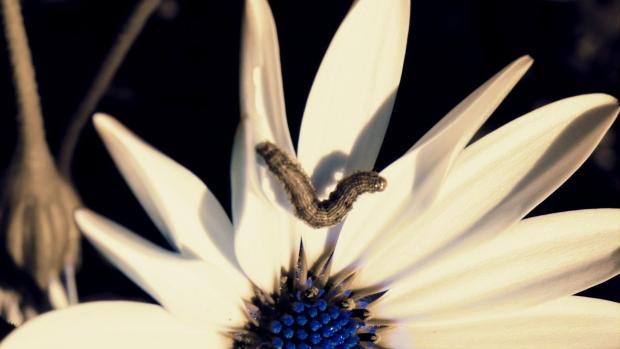
Photo: Siddharth Kankaria / Research Matters
We are all familiar with the concept that our genes act as ‘instruction manuals’ for different physical traits we possess. The instructions in the gene make some of us short while others tall, some have brown eyes while others have grey, and so on. Phenotypic plasticity is a concept that builds on this. It is the ability of a single gene or a set of genes, under the influence of different environmental factors, to express different morphological features.
In a recent study, scientists from the Indian Institute of Science Education and Research (IISER) Thiruvananthapuram, have tried to explore phenotypic plasticity in the dark branded bush brown butterfly (Mycalesis mineus). Specifically, they have studied how environmental factors like relative humidity help in the development of this butterfly in pupal stage and prevent them from being the food of predators.
Butterflies, as we all know, have a mesmerizing life cycle. They transform from worm-like caterpillars into winged beauties, with a pupal stage in between. Since the pupal stage is immobile and has no defence against predators, what measures do they take to survive at this stage of their life cycle? An obvious strategy is to camouflage and avoid having a stark contrast with the background that would attract the attention of the predators.
“Crypsis through background matching has been shown to be an effective strategy against predation in the pupae of Papilios machaon, also called Old World swallowtail butterfly, in the wild. Similarly, in case of Mycalesis mineus, a change in the proportion of green and brown pupae according to wet and dry seasons could enhance survival in the wild”, says Mr. Harshad Vijay Mayekar, a research scholar from IISER Thiruvananthapuram and principal author of the study.
The dark branded bush-brown butterfly (Mycalesis mineus), used in this study, is a species of butterfly found in many parts of Asia. “Since Mycalesis mineus has many broods of offspring per year, we can rear several generations in a year’s span. While the larvae can be reared on locally available grass, adults feed on rotting fruit. Besides, the entire development from egg hatching to emergence of an adult insect from a pupal case (adult eclosion) takes around 25 days. Thus, variation in pupal colour, ease of rearing lead us to select Mycalesis mineus as the study organism”, explains Mr. Mayekar.
So far, there have been many studies on phenotypic plasticity in the colours of pupae, but very few have focussed on tropical butterflies. Since the dark branded bush brown butterfly is a tropical species, this study is significant in helping us understand what factors influence the phenotypic plasticity in response to the tropical environment. Humidity, for example is one such factor. Humidity in the tropics exhibits seasonal variation and hence a pertinent factor to study phenotypic plasticity.
In this study, the researchers have explored how humidity affects the plasticity of pupal colouration. The caterpillars use leaves to anchor themselves while forming a pupa. In different seasons like summer (dry) and monsoon (wet) the predominant colour of the foliage in an area changes from brown to green. In order to avoid being detected by a predator, the pupae would have to match themselves to the colour of the leaves.
To test their hypothesis, the team designed a thorough experiment by separating the larvae of the butterfly, into two groups. Both were allowed to feed on maize leaves and exposed to uniform light and temperature. However, one group was exposed to 60% humidity and the other to 85%, representing dry and wet season humidity values.
The researchers repeated this experiment on 1215 pupae and found that while brown coloured pupae were not very common, they were more frequent at lower humidity levels. They found that humidity also affected the choice of substrate – the object that pupae hung on for support. At lower humidity, more pupae formed away from the leaves. They also found that pupal colour was correlated to the time it took to form a pupa, with brown pupae forming faster than green ones.
This study was one the first to display that caterpillars of tropical species were selecting a pupation substrate of the corresponding colour responding to humidity in their surroundings. It also sheds light on how environmental factors affecting colouration could vary between tropical and temperate species. “Although the role of humidity in pupal colour variation has been explored before, our experimental set up and unequivocal protocol give more credibility to humidity as environmental parameter”, remarks Mr. Mayekar, emphasising the importance of the study.






